Sexing and Breeding Pseudogastromyzon cheni

Pseudogastromyzon cheni will breed
regularly in aquaria if given the correct conditions. Sexing them is quite easy
once you know what you're looking for.
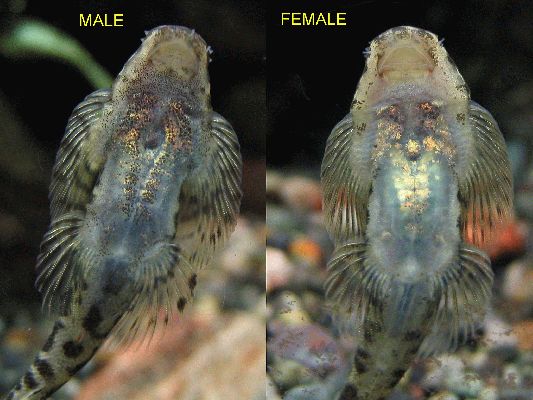
You'll note that the female's belly is noticeably more full than the male's. It
is convex and reflects the light back from it's centre. The female is broader in
the belly at the point just behind the Pectoral fin rear origin.
Look at
the nose of the fish. Sexually active male cheni have nasal tubercules increased in size.
See them either side of the nose? Compare with the female. Females have very
much smaller tubercules which do not increase in size when sexually mature. From
underneath, you can only just see one pair.
Here, you can see that the tubercules are very visible.

In a modified photograph, the weaponry is even more visible.

Females have small tubercules on the nose as well, but they do not grow like the males as they reach sexual maturity.
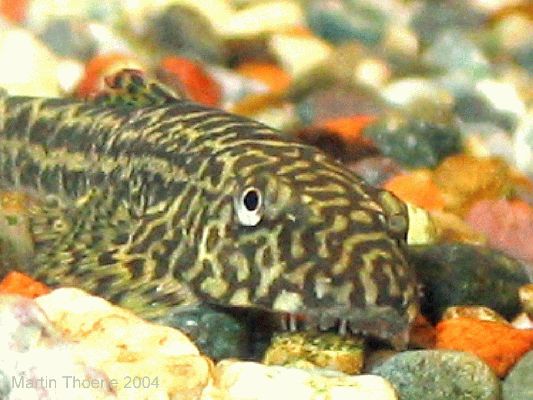
In this photo below, the upper fish is the dominant male in the tank
The other fish looks like a subordinate male. You can see it has tubercules, but they are somewhat smaller than the other fish.
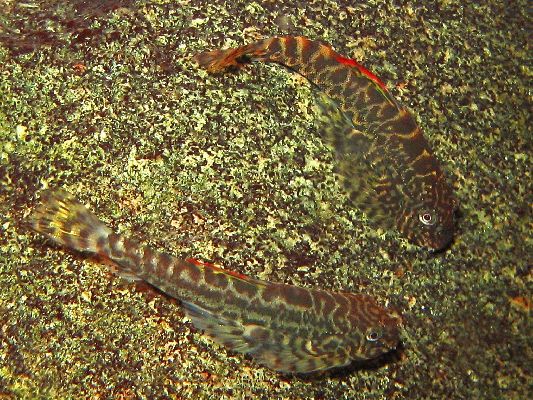
A male side-on is quite streamlined
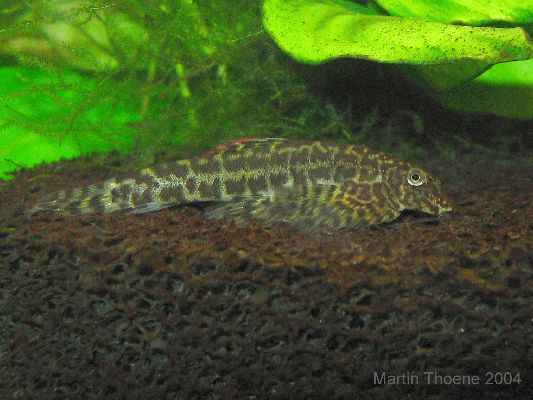
Note this one below has much reduced contrast between the light and dark body colours (see difference in dominant male above).
Females are generally this low contrast colour. Generally, they have a higher arch to the top profile of the body and are more full-bodied.

The good news is that P. cheni are pretty good at working out who is who themselves. P.cheni courtship consists of the male dancing around the chosen female (often on the aquarium glass) and generally following her around. At some point the male will get accepted by her and then she will tend to follow him around.
Two fish squaring up to one another and trying to get on top of one another are generally males in territorial dispute. At these times colours will be intensified and may change to what we term "war paint". The upper area darkens and the sides go paler than normal. Males will raise their colourful dorsals as a display.
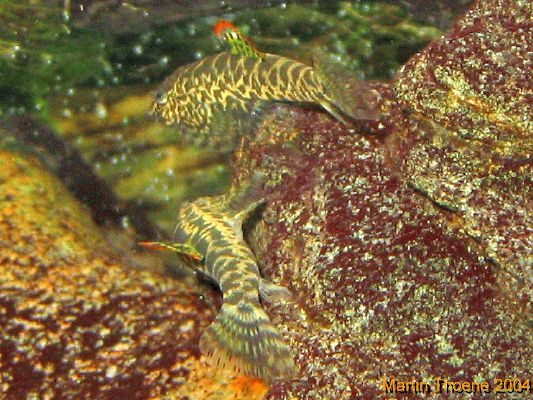
The dominant male will tend to be the one breeding in a tank where you have several. He will dig a pit under a stone by sliding backwards off it and whooshing substrate away with his tail.
Here, a male slides backwards in typical fashion, from a chosen pebble.

The male and female then take turns in sliding backwards into the hole and eggs are laid and fertilized. The male then covers up the eggs. Several pits may be dug, but generally it appears they choose one only.
The eggs are quite large.

After around 14 days, tiny babies will emerge from the gravel. At that time they are just under 1/4" in length and will begin grazing on microorganisms on the tank surfaces.
Here are three fry who have recently emerged from the substrate.
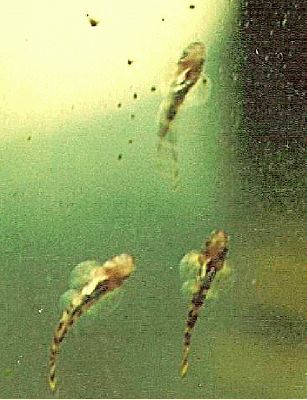
Once the fish start to spawn, they may repeat the procedure every few weeks. Therefore, you may find that your tank will contain several sizes of babies. The parents are not predatory and the fry will grow up with them as long as there are sufficient foodstuffs available.
Here are babies that were born around three weeks apart.
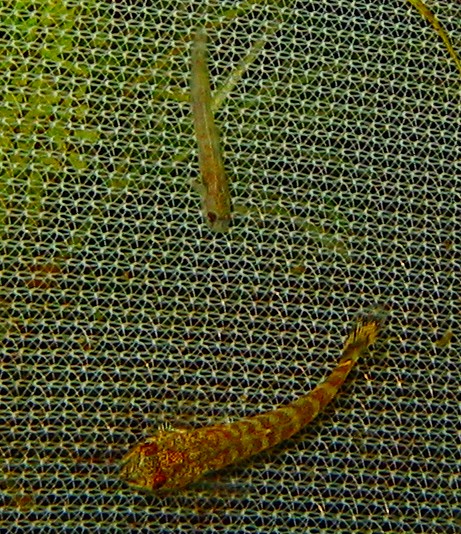

Once the babies become active,they grow quickly.
At around 3/8" they have a prominent caudal peduncle eye spot, probably to confuse predators.
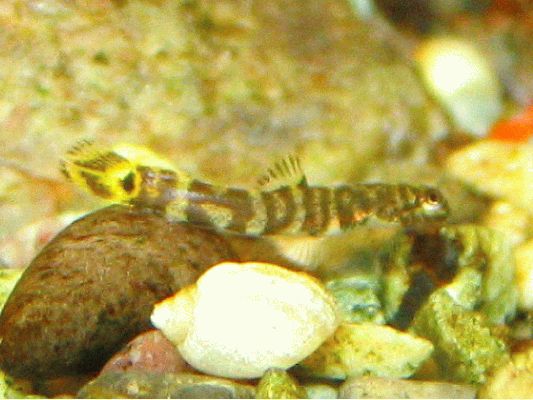
They will take around 4-5 months to get to 1" (2.5cm) and reach 1.75"(4.5cm) in a year. Multiple generations of Pseudogastromyzon cheni will live together. Although easy to breed, their slow growth makes them of little significance from a commercial propagation point of view.
Document Actions


